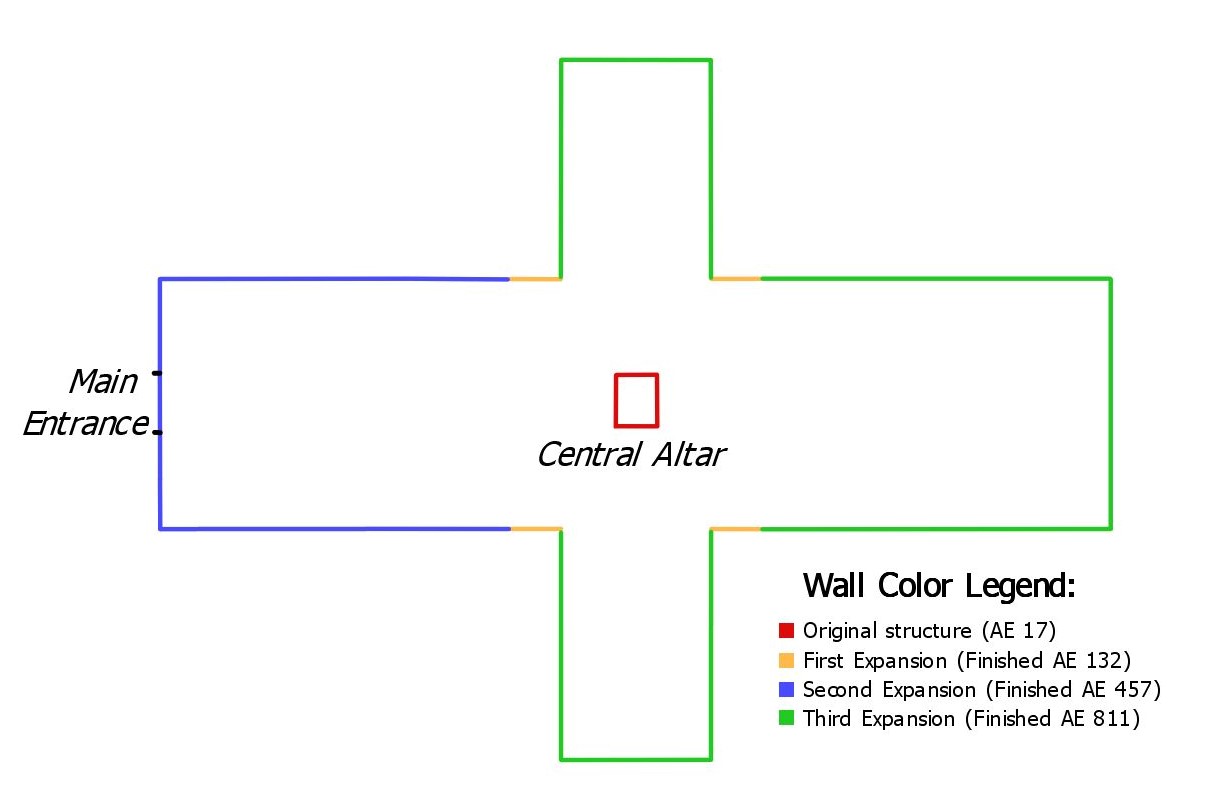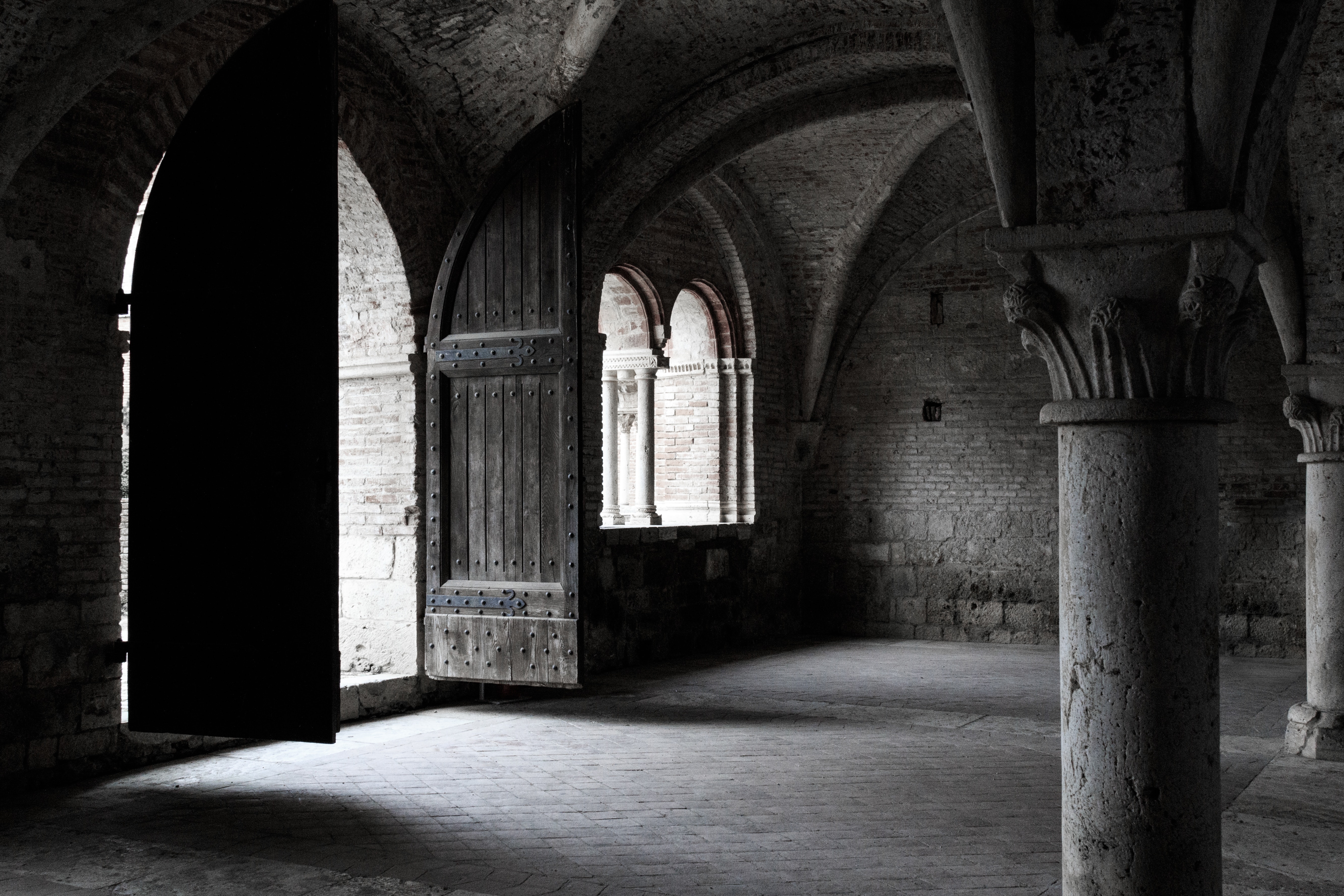The Father of Man Temple
I wish I could see it back then. Back when the Temple was still standing. The parts that weren't damaged sure look splendid. To think that the whole building was this beautiful - it's almost hard to imagine. To think that generations will miss the opportunity to see the building in its full glory just because some nobles can't be civil towards each other breaks my heart.
The Father of Man Temple is a grand temple originally built to give visitors in the city of Mandural in Asharia a place to worship the god Beddar, the Father of Man, while traveling. It is in some way the oldest building in the nation with the possible exception of Vanoxis, which no one knows when was built. Now lying partially in ruins from the war between Asharia and Kupria it was once a grand building, and the rebuilding of its former glory is in progress as we speak.
History
There are few buildings in the world that has been standing as long as the Father of Man Temple. Every stone in the building has been changed out since the first structure was erected - except the altar stone - but there has constantly been a temple in this spot since it was built back in AE 17 - which is 2095 years ago.
The temple started as a small building, only 4 by 5 meters in size, with a stone altar in the middle. At this time Beddar was usually worshiped at home, using private family altars inside the house. The building was first built to give visiting travelers somewhere to worship while in the city. After some years the locals started using the temple as well, worshiping both at home and in the temple. The temple started to become crowded - it had to be expanded.
First Expansion
Based on that original tiny little chapel in the middle, a larger, square room was built around the central altar to make room for more worshippers. This new building, measuring 25 by 25 meters, completely engulfed the old chapel, where the old walls were modified to a low fence so that everyone in the new temple could see the altar. Building of this new building started in AE 99, and it was finished in AE 132.
More local families started to use the temple, and several families started using only the temple, removing the private altars from their homes. It was convenient, it saved space, and there were no places in doctrine where it stated they had to have an altar at home. This put more pressure on the temple, and around AE 280 the temple was again too small to accommodate everyone who came to worship.
Plague
Building of the larger temple didn't start at this time since a minor plague hit the city in AE 283, making resources sparse for years after. Use of the temple dwindled, not only because there were fewer people due to the plague, but also because the general population were told to not gather in places like temples and markets. This fear stayed in the public for years after the plague. It wasn't until AE 376 the work on expanding the temple was begun, creating two wings to the temple for staff rooms to be used by the clergy for offices, and for simple hospice for travelling worshipers. In addition the main room was elongated from 25 to 60 meter to be sure to accommodate enough worshipers for several decades. This time the building wasn't only built as a functional structure - this expansion also included decorative designs and new architectural technology. And thus, the building became the most advanced and splendid building of its time when the expansion was finally done in AE 457. It was a long time until the temple was altered again.
The Great Fire
The great fire of AE 633 destroyed large parts of the city, and did major structural damage to the Father of Man Temple. Still, the central altar was still intact. Many people saw this as a sign from Beddar himself, and the stone altar was now considered the most holy object in the whole Cult of Beddar. Even while the temple was repaired after the fire people started coming from far away just to touch the altar. Stories about miraculous events happening to those who touched the altar began to spread, though there were no documented cases of anything miraculous. This made even more people visit to the temple.
The temple soon became too small to accommodate all visiting worshipers even before the damage from the fire was repaired. The temple was again expanded, adding another 35 meters to the main room to a total length of 90 meters. The wings were widened to give more space to the main room, moving the clergy offices and hospice rooms outside the temple. It was a rather ambitious expansion which wouldn't be done before AE 811.
The finished temple was the jewel of the city for several centuries. For a long time it only went through small renovations whenever some part of the building became too old and worn. In AE 1375 the funding from the state was reduced to afford the process of moving the capital from Mandural to Elmazar. This made the renovations lag behind since the upkeep of such a large building is expensive. Slowly the grand temple showed more signs of decay, and there were no funding to stop it.
Renovation
It wasn't before the early 1700's the funding to renovate the Father of Man Temple resumed. This happened after a long and exhausting discussion between the ones wanting to preserve the temple and the ones controlling the official funding. By then it had been 300 years where next to no renovations had been done. The temple was standing, but some of the floors needed changing, and most of the doors would need to be fixed or changed completely. The funding in the beginning was low, making it hard to cover all bases. It wasn't before AE 1837 the temple was renovated fully. Again, the temple stood in all its splendor.
The popularity of the temple as a fantastic structure dwindled somewhat as the city of Elmazar in the north was built, but the devout followers of Beddar kept using the temple for their prayers. The funding declined somewhat as well, yet staying just high enough to cover the needed renovations. As fewer people were using the temple the size was more than enough to accommodate everyone using it.
Time of War
As the war between Asharia and Kupria started in AE 2032 there was a wave of national pride rolling over the nation, making buildings, art and culture that was old and Asharian gain a newfound popularity. The keepers of the temple were ecstatic that the beautiful grand temple was in the public eye yet again, but also despairing. The newfound popularity meant more people would visit the temple, which meant more wear and tear. Getting extra funding to pay for the needed renovations would be next to impossible, now that most extra money went to the war effort and the new wondrous Clockwork Gondola was being built between the cities of Elmazar and Mandural.
In AE 2047 another consequence of the war was felt in the Father of Man Temple as a couple of magicians opposed to Asharia keeping up the war blew up parts of the central temple. The magicians were captured and punished for their crime, but the temple was partly ruined. Again, the altar in the middle remained undamaged, even though it was in the zone of the explosion. The signs were clear: Beddar himself was indeed protecting this altar.
Everything around the altar was destroyed, and with the war raging on there were no funds to repair the broken temple. There was no other thing to do than to close the temple, and hope that it wouldn't fall apart too much before the necessary funding was available.
After the War
Even when the war ended in AE 2091 there were other things that needed the money more than the temple did, so the ruined structure still stood in the best and most visible spot in Mandural. It wasn't before AE 2110 - two years ago - the temple was decided to be repaired back to its former glory. The work has begun, and the current plan is to try to finish the repairs before AE 2200.
Inside the main entrance doors after the temple was finished.







Comments